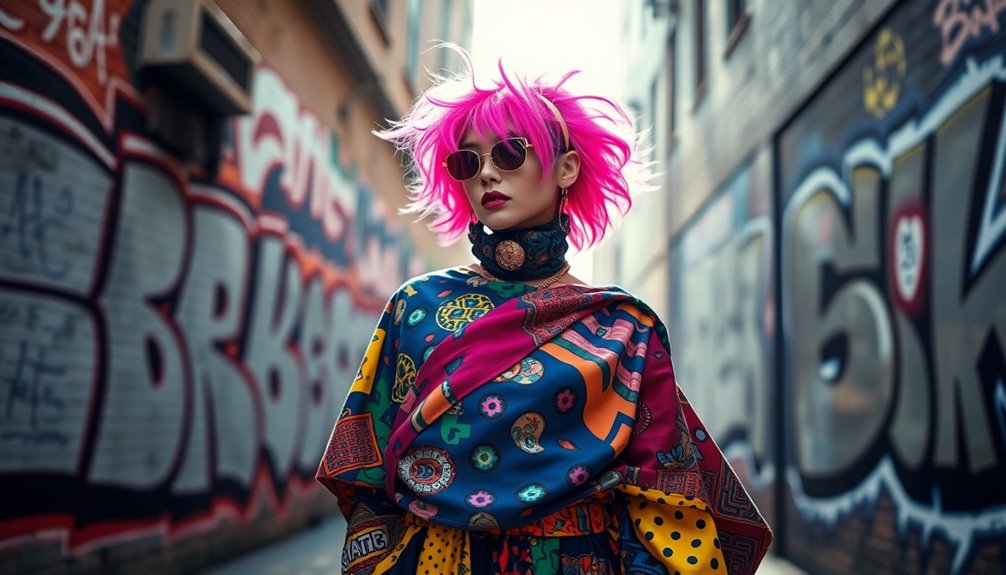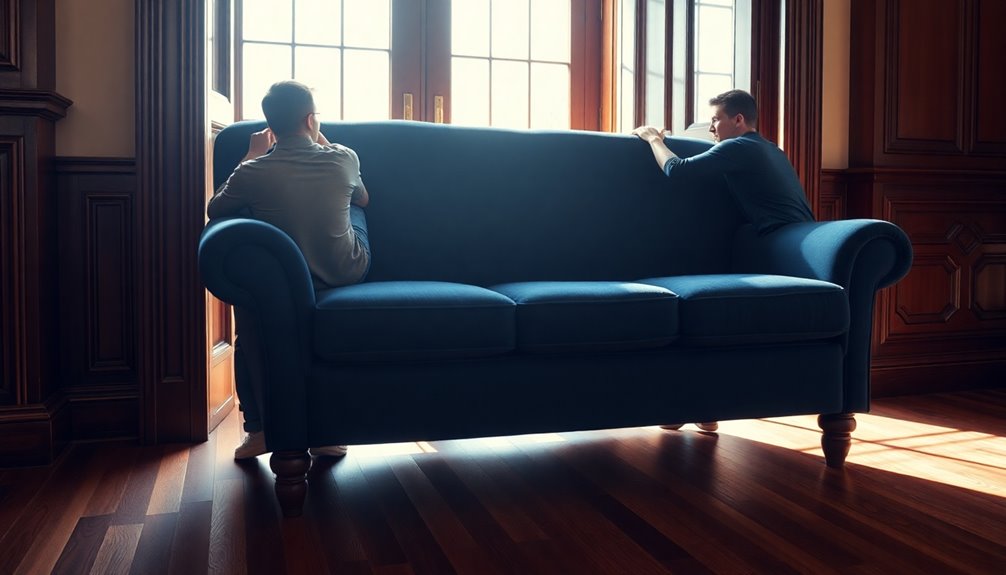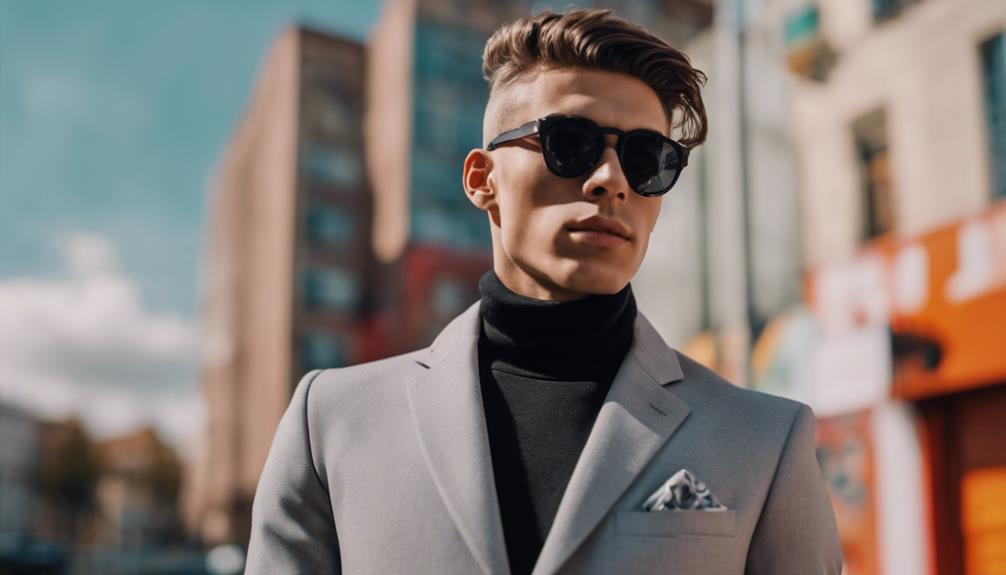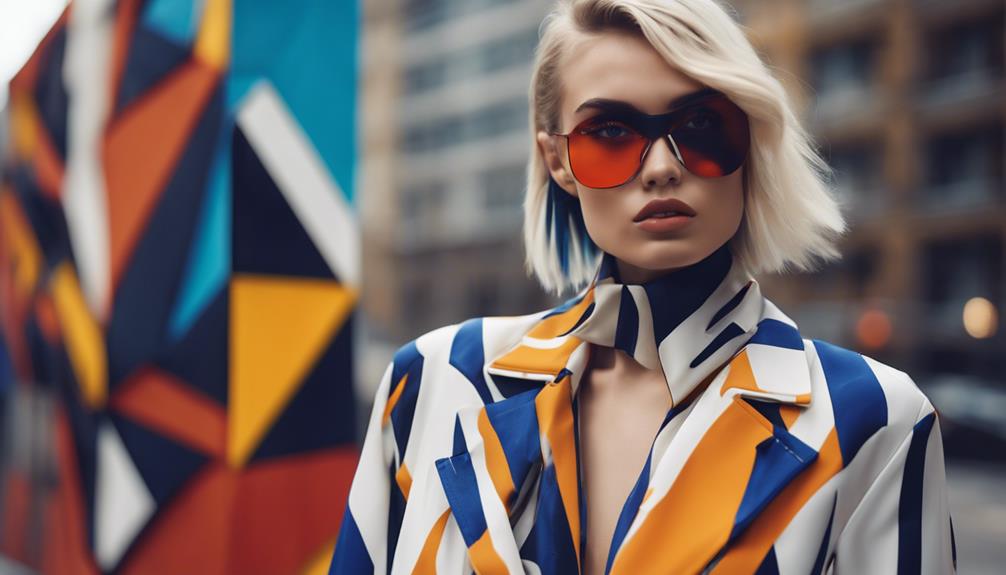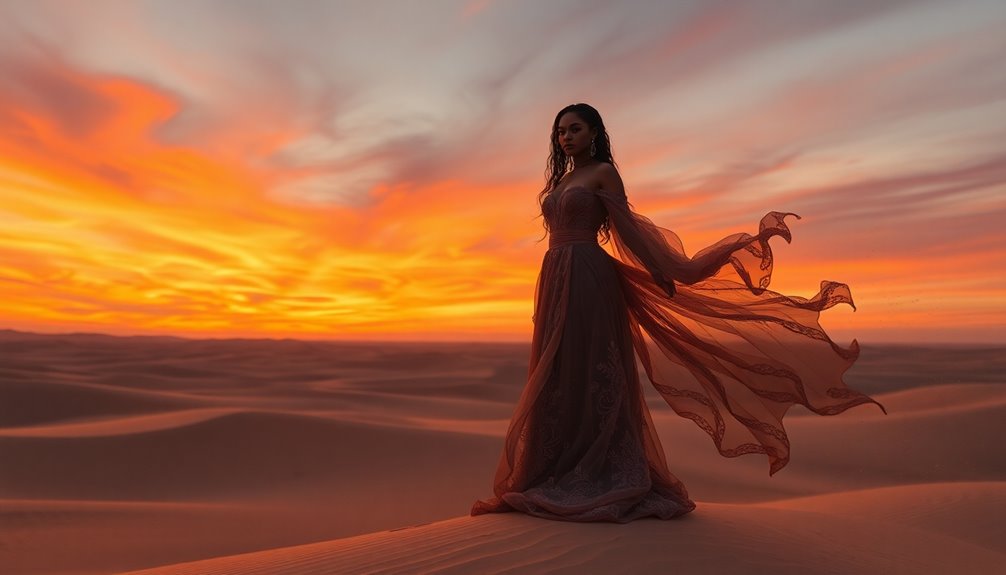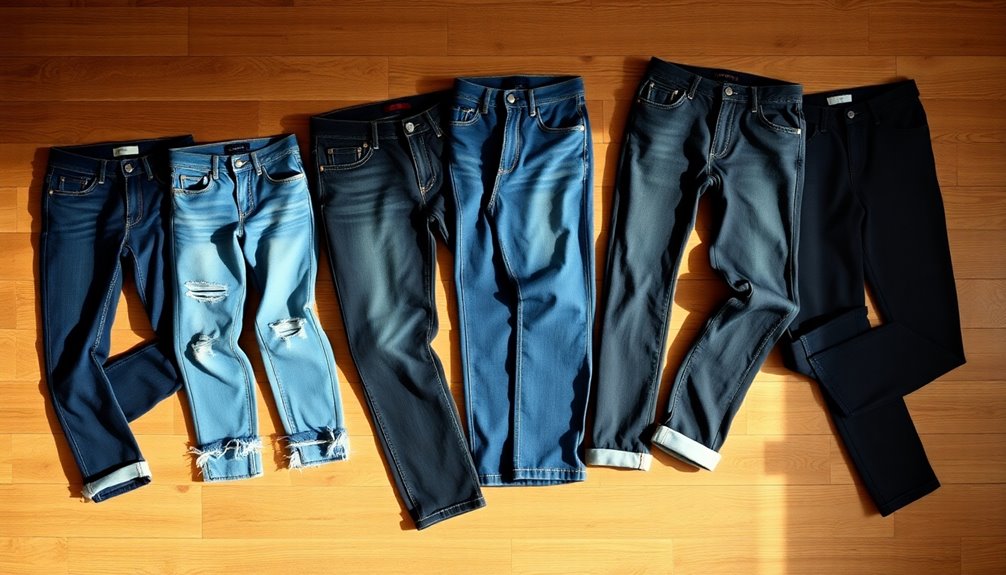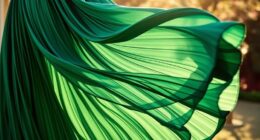Japanese street fashion has a striking influence on avant-garde photography, blending traditional aesthetics with innovative expression. You'll notice elements from Harajuku's vibrant culture, where styles like Lolita and Gyaru emerged, creating a fresh narrative in fashion imagery. Designers like Rei Kawakubo and Yohji Yamamoto play with concepts like Wabi-Sabi, highlighting beauty in imperfection. This shift challenges Western norms, inviting photographers to integrate unique cultural elements into their work. As these creative exchanges continue to reshape visuals, you'll find the evolution is far from over, revealing even more fascinating connections in the world of fashion and photography.
Key Takeaways
- Japanese street fashion, particularly from Harajuku, introduced vibrant, eclectic styles that challenged traditional fashion photography norms globally.
- Avant-garde designers like Rei Kawakubo and Yohji Yamamoto influenced photography by integrating innovative textiles and asymmetrical designs into visual narratives.
- The Wabi-Sabi philosophy, emphasizing beauty in imperfection, transformed the aesthetic approach in fashion photography, inspired by Japanese cultural elements.
- Cross-cultural exchanges between Japanese street fashion and Western photography enriched storytelling, blending traditional and contemporary visual languages.
- Photographers began capturing the spontaneity and individuality of street fashion, reflecting a shift towards authenticity and emotional depth in their work.
Origins of Japanese Street Fashion
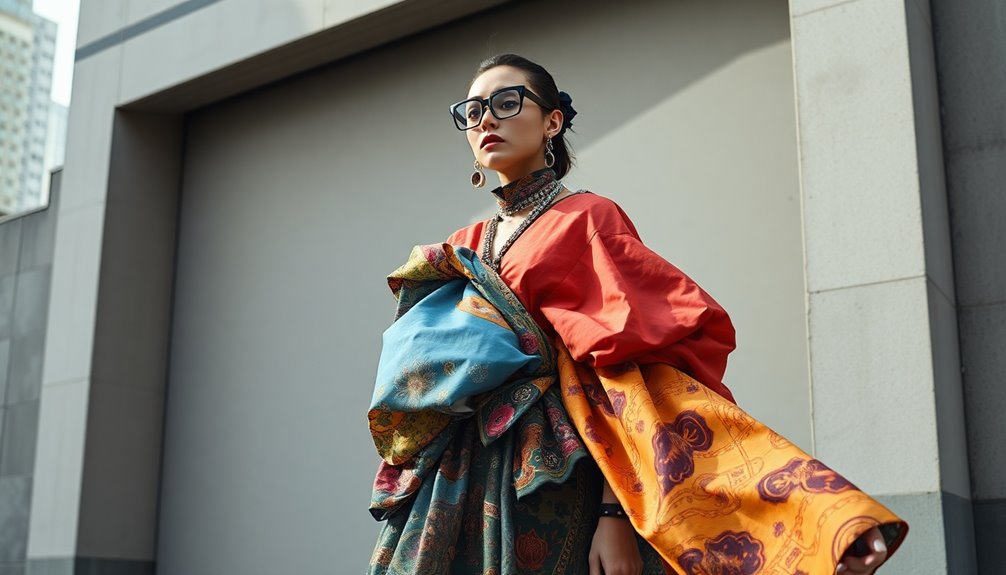
Emerging from the cultural upheaval of post-war Japan, Japanese street fashion has roots deeply embedded in the influence of Western styles. During the Allied occupation, American soldiers and civilians flooded the area, introducing local youth to new trends and lifestyles.
You'll notice that local shops catering to these Americans began offering Western goods, sparking a fascination for American fashion among Japanese youths.
As the 1960s rolled in, a vibrant youth culture blossomed in Harajuku, fueled by the Tokyo Olympics in 1964, which attracted tourists and new stores. This period saw young people renouncing traditional values, exploring and creating unique fashion styles.
Subcultures like Lolita, Gyaru, and Ura-Hara emerged, each bringing distinct dress codes and rituals. Urahara's legacy continues to inspire new brands and designers, establishing a foundation for modern streetwear.
These innovations in fashion weren't just about clothes; they symbolized a broader cultural shift. You can feel how the blend of Western influence and local creativity defined early Harajuku fashion, paving the way for the eclectic styles that characterize Japanese street fashion today.
It's a reflection of a society embracing change while maintaining its unique identity.
Key Avant-Garde Designers
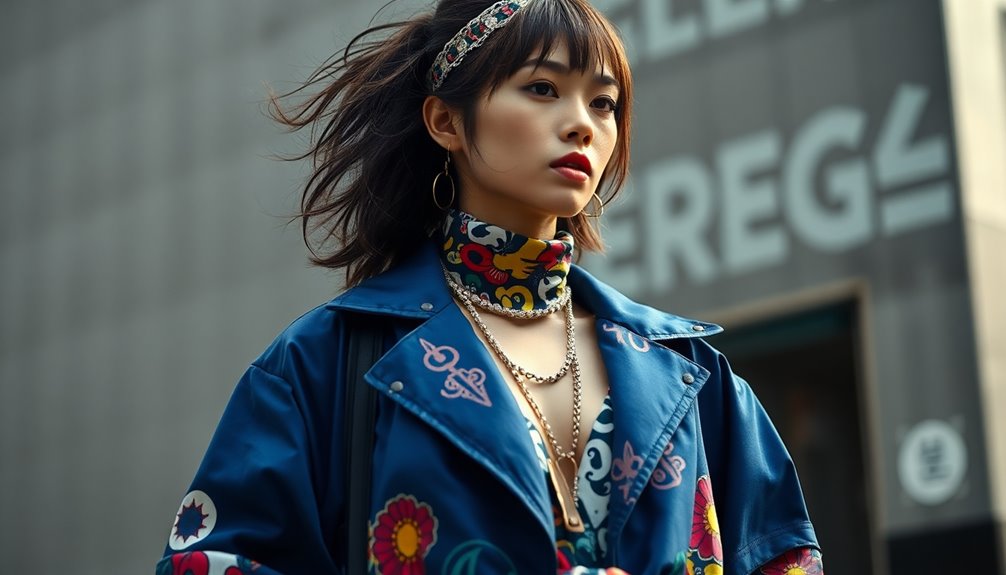
A handful of avant-garde designers have significantly shaped the landscape of Japanese street fashion, each bringing their unique vision and creativity to the forefront.
Issey Miyake rose to fame in the 1970s with his Pleats Please line, known for its minimalism and architectural shapes. His innovative garment construction methods not only created functional designs but also left a lasting global impact. Miyake's approach to fashion parallels the collage techniques used by avant-garde photographers, blending various elements to create striking new forms.
Yohji Yamamoto introduced a radically new conception of fashion in the 1980s with his asymmetrical, deconstructed garments. His work influenced youth culture and street style, making waves on both Paris runways and Tokyo's fashion scene.
Rei Kawakubo of Comme des Garçons became a central figure in the 1980s Japanese fashion revolution. She emphasized the beauty of imperfection and utilized innovative textiles, earning international acclaim for her groundbreaking designs.
Other influential figures include Junya Watanabe, who blurred the lines between fashion and photography, and Jun Takahashi of Undercover, who connected contrasting elements in his designs.
With contributions from Kansai Yamamoto, Kenzo, and Hanae Mori, these designers have collectively redefined the boundaries of fashion.
Harajuku's Cultural Significance
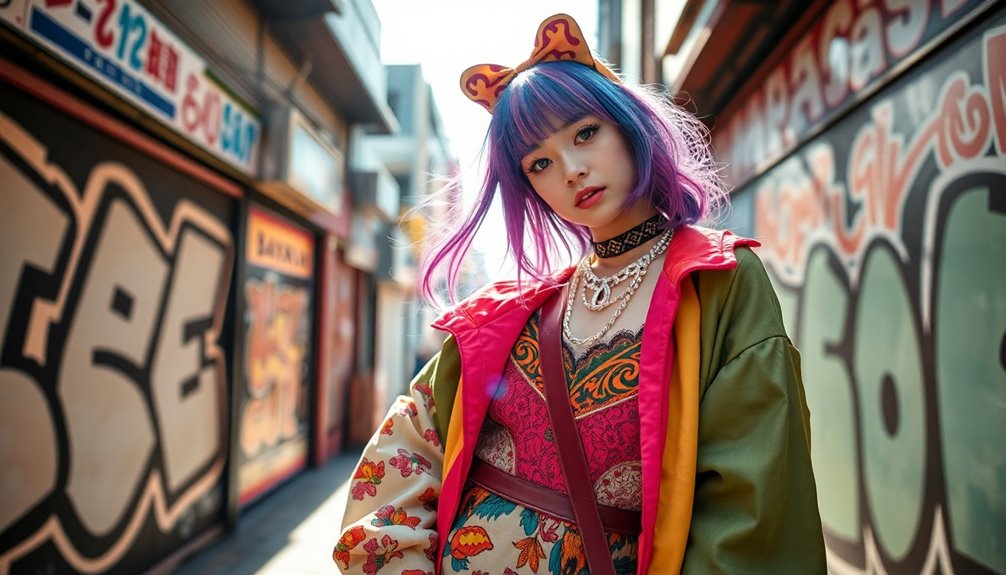
Harajuku stands as a vibrant hub of youth culture and self-expression, where bold fashion statements and eclectic styles collide. Its historical roots trace back to the Edo period, evolving significantly through the Meiji period with the establishment of the Meiji Shrine. The post-war era introduced Western influences, especially from American soldiers, shaping the youth's fashion choices.
By the 1970s, Harajuku emerged as the epicenter of Tokyo's counterculture movement, making it a melting pot of diverse subcultures like Lolita, Gyaru, and Cosplay. You can feel the energy of community and freedom of expression as young people showcase their unique identities through fashion. This vibrant scene was further amplified by the launch of FRUiTS Magazine, which became a crucial platform for showcasing the diverse fashion styles of Harajuku youth.
This eclectic street style thrives on a do-it-yourself ethos, with streets like Takeshita and Omotesando buzzing with creativity. Over the years, styles have evolved, yet the core values of individuality and self-expression remain unchanged.
Harajuku's significance extends beyond its borders, as documented by magazines like "FRUiTS," which captured the essence of its fashion scene. As a cultural landmark, Harajuku continues to inspire both local and global trends, keeping its vibrant spirit alive for future generations to embrace.
Impact on Global Photography
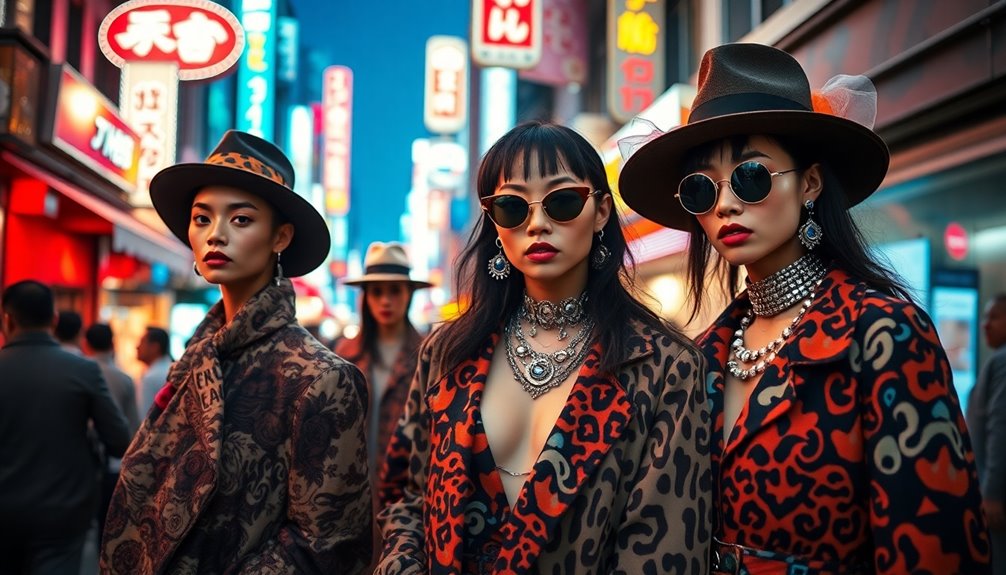
The vibrant energy of Harajuku's street fashion has significantly shaped global photography, merging traditional aesthetics with contemporary styles. Japanese avant-garde designers like Issey Miyake and Rei Kawakubo challenged Western norms, introducing asymmetrical designs and androgyny. Their groundbreaking work in the 1980s and 1990s not only gained international recognition but also influenced renowned European designers, leading to widespread adoption of deconstruction techniques and the iconic use of black in fashion.
Photographers like Nobuyoshi Araki and Joichi Teshigahara have integrated traditional Japanese elements into their fashion photography, creating a unique visual language that blends high fashion with ancient art. The Wabi-Sabi philosophy, emphasizing beauty in imperfection, has transformed fashion photography, encouraging a focus on irregularity. Geisha imagery has also inspired modern fashion trends, further enriching the visual narrative in photography.
Harajuku's street style, documented by Shoichi Aoki in FRUiTS, inspired global youth to embrace avant-garde aesthetics, leading to the rise of subcultures like Gothic Lolita and Cyberpunk.
Through cross-cultural exchanges, Japanese fashion photography has encouraged Western designers to incorporate Japanese motifs into their collections, enriching the creative scope of global fashion photography. This dynamic interplay continues to redefine visual storytelling in the fashion world.
Fusion of Fashion and Art
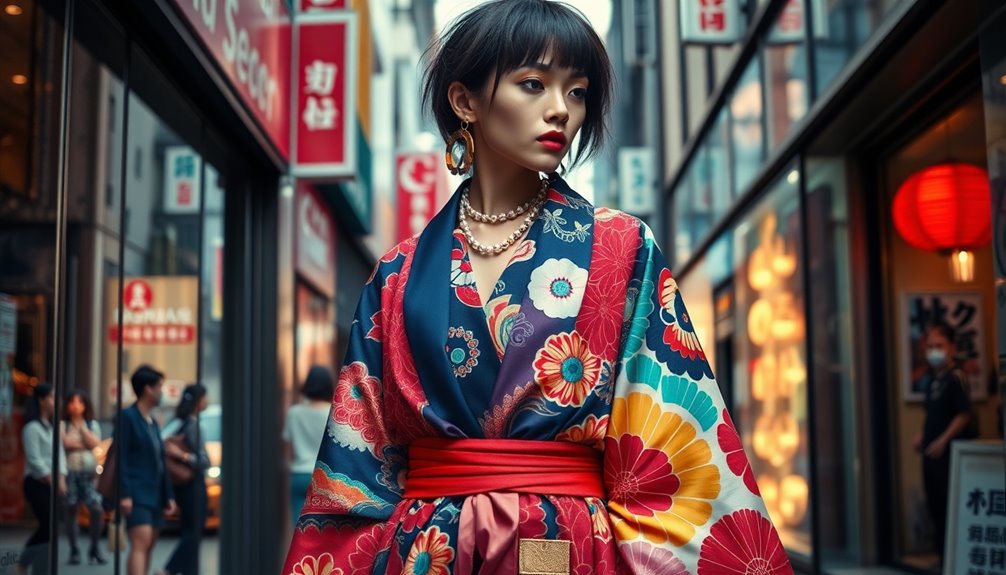
Fusion of fashion and art often manifests a captivating dialogue that challenges and redefines boundaries. You'll notice how avant-garde designers seamlessly blend traditional and modern elements, creating a unique aesthetic.
For instance, kimono-inspired structures, like obi belts and hakama-like pants, breathe new life into contemporary fashion. The influence of wabi-sabi is evident, where you find beauty in imperfections through asymmetrical designs and a minimalist color palette. Japanese designers have significantly shaped this aesthetic, introducing Wabi Sabi concepts that encourage embracing imperfection.
Integrating Japanese textiles and innovative techniques, designers push the limits of creativity. Seasonal inspirations, such as cherry blossoms, subtly enrich runway designs, grounding them in cultural significance.
This fusion doesn't just stop at aesthetics; it also embraces cultural elements, fusing Western and Japanese styles to create something truly captivating.
Designers like Rei Kawakubo and Issey Miyake have pioneered this movement, using their work to challenge conventional beauty standards and gender norms. By doing so, they inspire a global audience, influencing streetwear and high fashion alike.
As you explore this vibrant interplay, you'll find that the fusion of fashion and art continues to shape the narrative of contemporary style, reflecting a rich tapestry of cultural heritage and innovation.
Iconic Fashion Photography Styles
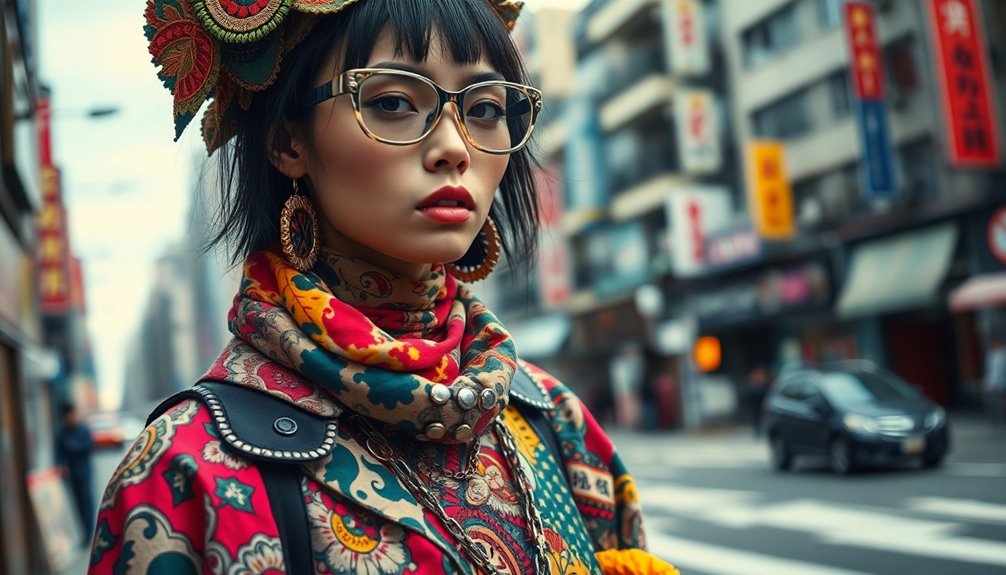
Fashion photography has evolved into a powerful medium that captures the essence of style while influencing cultural trends. From the early 20th century, pioneers like Baron Adolf De Meyer and Edward Steichen laid the groundwork, pushing the boundaries of artistic expression in fashion. Their work paved the way for iconic figures like Horst P. Horst and Irving Penn, who defined classic fashion photography with elegance and striking compositions.
As the genre matured, the Golden Age featured visionaries like Richard Avedon, whose dynamic images transformed the post-WWII landscape. You can't overlook Helmut Newton's provocative black-and-white photography that challenged norms. Surrealists like Man Ray and Guy Bourdin added a dreamlike quality, while Frank Horvat and Norman Parkinson brought fashion outdoors, capturing spontaneity and humor. Baron Adolf De Meyer was notable for being the first photographer for Vogue, which helped cement the magazine's role in shaping fashion trends.
In modern times, photographers like Peter Lindbergh and Annie Leibovitz shifted the narrative, showcasing raw authenticity and intimacy. Juergen Teller and David LaChapelle introduced alternative aesthetics, merging fashion with pop culture.
Each style contributes to a rich tapestry of visual storytelling, reflecting society's evolving tastes and attitudes in fashion photography.
Future Trends in Photography
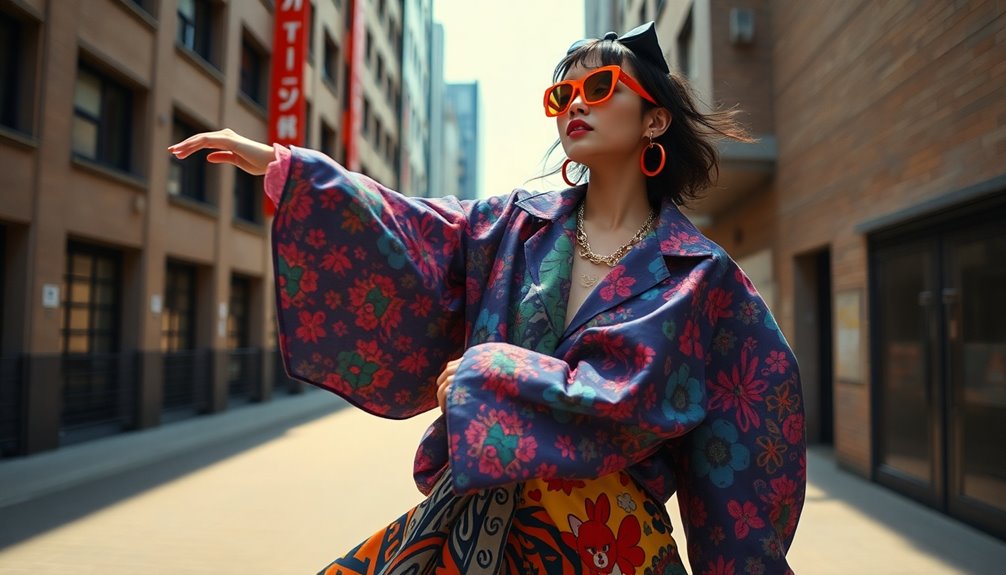
As we look ahead, photography is set to undergo transformative changes driven by AI and innovative technologies. You'll find that AI-driven content creation is simplifying workflows, allowing you to enhance your creative potential like never before.
Automated editing tools will provide instant filters and adjustments, making it easier to achieve sharper details and optimized exposure. This emphasis on AI-enhanced creativity will encourage photographers to explore unique compositions and innovative techniques. Additionally, the rise of real-time analytics will enable photographers to make data-informed decisions regarding their creative direction.
Experimentation will also play a crucial role in future photography trends. You'll explore unconventional perspectives and create abstract imagery using techniques like double exposures and light painting.
High-contrast photography will emerge, emphasizing bold visual language that resonates with your audience.
Immersive experiences will redefine how you capture moments. Expect 360-degree photography and VR/AR technologies to provide viewers with a sensation of being in the scene.
Drones will offer dynamic aerial perspectives, changing the way you approach landscapes and events.
Sustainability and authenticity will be at the forefront, with a focus on eco-friendly practices and natural lighting. You'll prioritize lifestyle images that highlight products in everyday contexts, raising awareness about environmental issues while making conscious choices in your photography equipment.
Embrace these trends, and your work will evolve alongside the industry.
Frequently Asked Questions
How Does Japanese Street Fashion Differ From Traditional Japanese Fashion?
Japanese street fashion's bold expressions and eclectic styles contrast traditional fashion's subtlety. You'll notice a mix of influences, gender fluidity, and everyday wear, showcasing individuality while reflecting modern youth culture and global trends.
What Role Do Social Media Play in Japanese Street Fashion Photography?
Social media's a vital platform for you to showcase Japanese street fashion photography. It connects you with diverse communities, amplifies trends, and documents style evolution, allowing you to share your unique vision with a global audience.
Who Are Notable Photographers in Japanese Street Fashion?
When exploring Japanese street fashion, you'll find notable photographers like Daidō Moriyama, Rei Shito, Jiro Konami, and Shōmei Tōmatsu. Each captures unique perspectives, showcasing vibrant styles and the cultural essence of Japan's fashion scene.
How Does Japanese Street Fashion Influence Youth Culture Globally?
Japanese street fashion shapes youth culture globally by inspiring self-expression and individuality. You'll see vibrant styles and unique aesthetics influencing trends, encouraging you to embrace diversity and creativity in your personal fashion choices.
What Materials Are Commonly Used in Street Fashion Photography Shoots?
In street fashion photography shoots, you'll commonly use DSLR or mirrorless cameras, versatile lenses, high-capacity memory cards, and accessories like tripods. Natural light, urban backdrops, and creative techniques enhance your shots and capture unique styles.
Conclusion
In conclusion, the vibrant world of Japanese street fashion continues to shape avant-garde photography in exciting ways. By blending traditional elements with modern creativity, this unique style inspires photographers to push boundaries and explore new artistic expressions. As you embrace these influences, you’ll find that the fusion of fashion and art opens up endless possibilities for your own work. Keep an eye on emerging trends, as the future of photography is sure to be as dynamic as the streets of Harajuku. Moreover, the intricate layers and textures found in gothic lolita fashion details add a captivating depth to photographic compositions. By incorporating elements of this style, photographers can create a striking contrast that highlights the delicate nature of the clothing against bold urban backdrops. This rich interplay not only showcases the artistry of fashion but also invites viewers to experience the narrative woven through each image, further enriching the dialogue between fashion and photography.
